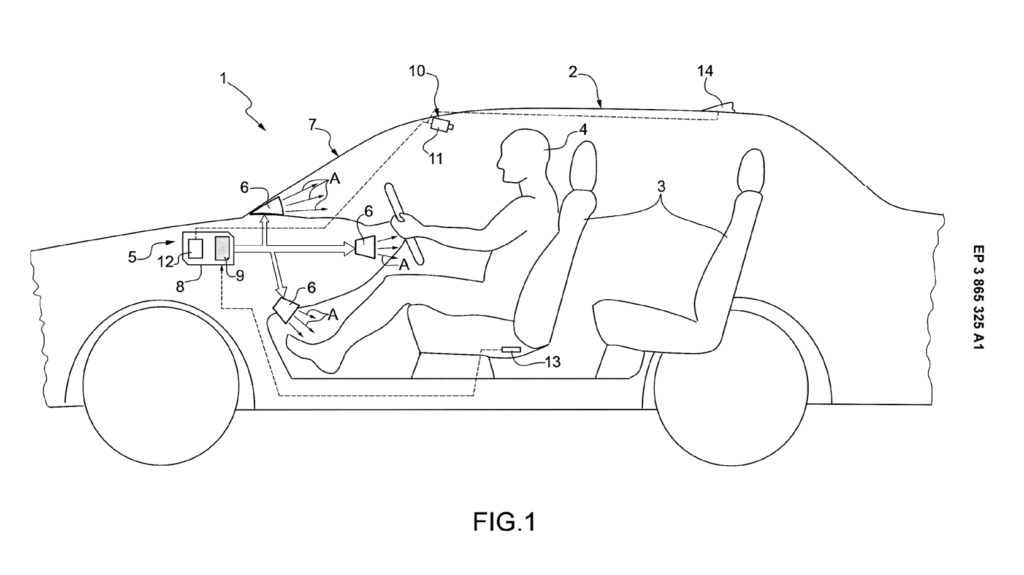Ferrari patents climate control innovation
- PostedPublished 10 September 2021
Supercar manufacturer Ferrari appears to be working on a new HVAC control system that will keep the rarefied air of its vehicle cockpits at precise temperatures.

A patent filed by Ferrari includes details of climate control sensors that measure the temperature of vehicle occupants, as well as taking into account the general cabin air temperatures and solar loading.
It describes existing automatic climate control systems as only adjusting temperature and airflow in order to reach a set temperature inside the car “without actually considering the real thermal conditions, the real presence and the actual position of the occupants of the passenger compartment of the road vehicle”.

The patent application also says existing systems achieve set cabin temperatures “without considering the needs and the habits of the occupants and without evaluating what incidence the solar irradiation has in the temperature distribution on the inside of the passenger compartment”.
VASA Vice-President Brett Meads compared the Ferrari innovation to the almost-as-advanced climate control system of Australia’s Holden VF Commodore.
“The last of the VF Commodore produced here had the most advanced climate control system of its type, with the ability of the sun-load sensor to determine the angle and intensity of the sun and make adjustments to different vent outlets to suit,” he said.
“This also incorporated a thermistor in each vent nozzle to allow fine-tuning of air delivery as the software responded to sensor input. This system relied on measuring the temperature of air samples from within the cabin, not the body temperature of occupants.”
Ferrari’s patent application describes the system as “a method to control an air-conditioning system in a passenger compartment of a road vehicle, comprising the steps of detecting, by means of a sensor member, a body temperature of at least a part of the body of one or more occupants of the passenger compartment and transmitting the detected body temperature to the air conditioning system, which controls a plurality of ventilation devices arranged inside the passenger compartment, wherein the method comprises the further steps of identifying the number and the position of the one or more occupants seated in the passenger compartment, determining an optimised tuning at least based on the body temperature detected by the sensor member and controlling the ventilation devices as a function of the optimised tuning.”

Meads expected the innovation to likely be centred on the software required to control cabin temperature and airflow based on the additional body temperature measurements.
I would think the hardware to accommodate this has largely been around and available for some time,” he said.
“The key to implementation will be in the software; getting the mapping right under endless permutations of input conditions will be the trick … I guess it is only a step up from measuring the weight loading on a given seat to drive the SRS response to suit.”
Ferrari’s first model to feature this advanced climate control system is expected to be the Purosangue luxury SUV that will compete with the Lamborghini Urus and Aston Martin DBX when it launches next year.
- CategoriesIn Latest News
- Tagsair-conditioning, Climate control, Ferrari, HVAC





